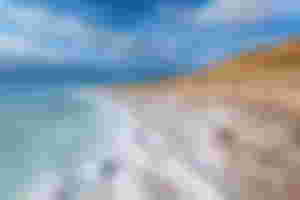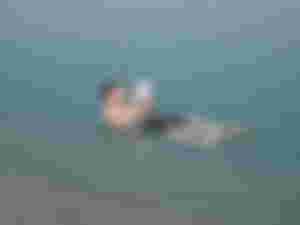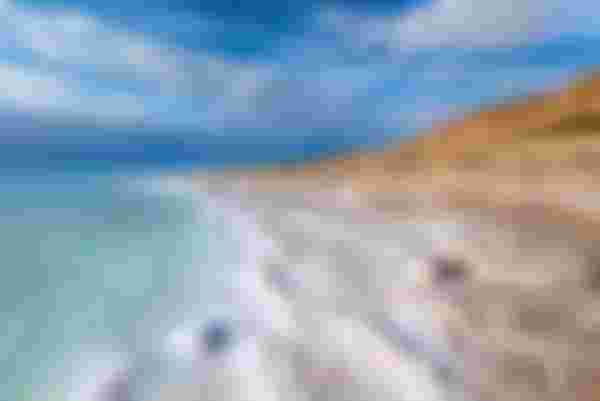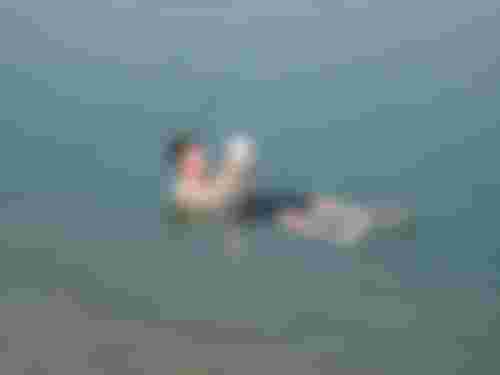
Although it is called Sagar, it is basically a lake with a maximum depth of 304 meters. Located in the Middle East, the Dead Sea is bordered on the east by Jordan and on the west by Israel and Palestine. Its surface and shores are about 429 meters below sea level. So it is considered as the lowest land surface.
Now let's talk about why everyone calls this huge saline body the Dead Sea, the salinity of its water is about 34.2%, which is 7.8 times more saline than the sea water. Aquatic animals cannot live and thrive in the hostile environment caused by this excessive salinity, so it goes without saying that there is no life in this sea. That is why this water body is called Dead Sea.
It is said that about three million years ago the present Jordan River, the Dead Sea and the Wadi Arabah region were repeatedly flooded by the waters of the Red Sea. This results in the formation of a narrow bay. The bay was connected to the Red Sea by a narrow connection in the Jezreel Valley. According to natural theory, the land between the valley and the Mediterranean Sea reached a considerable height about 2 million years ago. As a result, the bay created in this region by the flood of the ocean is turned into a lake.

No animal can live in this sea. No man can enter its water even if he wants to. No matter how hard you try, you will be drowned. Do you know why? Because the salinity of water is so high, the buoyancy of water is much higher. If you don't know what buoyancy is, know it. Bubbling is the upward force of water applied on an object. When an object is submerged in water, the weight of the object applies a force downwards. Water also forces the object upwards. If the object weighs more, the object sinks, and if the buoyancy is higher, the object floats. But the buoyancy of the Dead Sea water is so great that even if the object weighs a lot, it is very difficult to carry it.
The analysis shows that there are differences in the amount of minerals in Dead Sea water compared to ocean water. The salt in the Dead Sea water contains 14% calcium chloride, 4% potassium chloride, 50% magnesium chloride and 30% sodium chloride. The density of this water is 1.24 kg / liter. Due to all these elements, the buoyancy of Dead Sea water is much higher than that of other parts of the world. And this is high
Nothing sinks in this sea due to the force of the buoyancy. Anyone can be floating in the waters of the Dead Sea. Since ancient times, the lake has been considered a source of various natural minerals, including potash, for making mummies in Egypt and for fertilizer production. The salt and minerals obtained from this lake are used in making various cosmetics and perfumes.
There are no fish in the Dead Sea, because no fish can live in this ocean. Similarly, there are no fish in the Jordan River next to it. This sea is called the Dead Sea because no plant or fish can survive in its waters. Only a small number of bacteria and fungal microorganisms are found in this sea water. Camels, rabbits, geckos and even leopards can be seen in the hilly areas along the Dead Sea. In the past, the Jordan delta region was rich in papyrus and palm groves. During the Roman and Byzantine Empires, sugarcane, cicamos, and henna brought prosperity to the plant diversity of the region. In Jericho, high-quality perfumes and fragrances were made from the sap of the balsam tree.
Today, the Dead Sea region has become a hotbed of medical research. At the root of this are the huge presence of minerals in the lake water, the presence of allergens and pollen in the air, high atmospheric pressure, and the low presence of ultraviolet in solar radiation. High atmospheric pressure, quite beneficial for patients suffering from shortness of breath. Prolonged sunbathing is very beneficial for psoriasis. The scarcity of ultraviolet rays in the region has played a significant role in creating a conducive environment for sunbathing. Scientists have also claimed that the salt of the Dead Sea is very useful for curing the disease.


This post give me a huge knowledge about dead sea. Thanks for your artical.